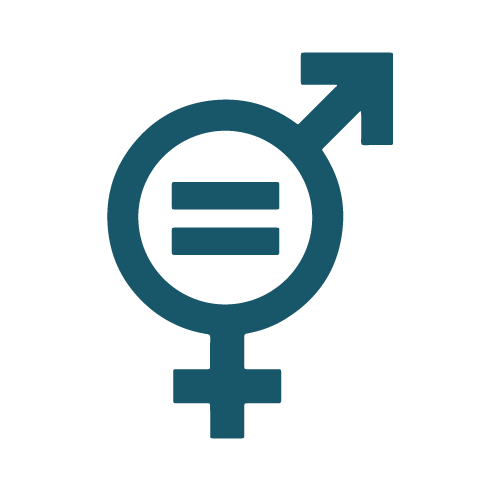
Digital equity as a path to creating a more just and equitable world
What is Digital Equity
Digital equity is a reality in which all individuals and communities have the information technology skills and access needed for full and meaningful inclusion in their societies and economies. Achieving digital equity is necessary to guarantee full economic, political and social participation of all people and to ensure their access to employment, education, lifelong learning, healthcare and other essential services.
Adapted from NDIA’s definition
Serving Marginalized Communities
To contribute to achieving digital equity, we invest into organizations that are embedded in the communities they serve, namely those serving communities marginalized by:
| Gender Gender inequality in the physical world is replicated in the digital world, which affects women’s and girls’ access to employment – and their safety. | Disability The “disability divide” affects 15% of the world’s population – 80% of which live in developing countries, according to the World Bank. Despite this, significantly fewer people with disabilities use the Internet than do people without. | Geography In general, rural populations are less than half as likely to use the Internet as urban areas, though stark differences exist within urban areas as well, depending on socioeconomic status. |
| Race, ethnicity, and indigeneity Colonization, discrimination, and racism have created legacies of digital inequity among historically marginalized communities. The includes racial,ethnic and religious groups, indigenous populations and among internally displaced persons (IPDs) and refugees | Wealth and income Global wealth gaps continue to grow, and digital access, use, and fluency generally follow wealth and income lines. In addition, socioeconomic status, education level and income correlate with digital inclusion, access, and literacy. | Generation Younger people, including students, and aging populations both experience varying life outcomes due to gaps in digital literacy and access. |
Service Areas
We invest in solutions where digital inclusion overlaps with three social and economic development services:
| Healthcare Digital access and skills can provide ample opportunities for previously excluded populations to access care that they wouldn’t be able to obtain otherwise. | Education As seen during the height of the COVID-19 pandemic, digital equity is critical to ensuring education equity as more and more material is based online. | Economic Opportunity Ultimately, to participate in the 21st century economy, digital skills will be critical to access the jobs of the future. |
Digital Equity on a Global Scale
We realize that solutions around digital equity are embedded within all of the UN’s Sustainable Development Goals (SDGs). Our work specifically contributes towards helping make progress on six SDGs:
Goal 3

Good Health and Wellbeing
2 billion people globally are still without access to healthcare. Digital access offers new opportunities to connect with health services.
Goal 4

Quality Education
826 million students did not have access to a computer at home, impacting their ability to access virtual learning during the height of the COVID-19 pandemic.
Goal 5

Gender Equality
Closing the digital divide means closing the gender divide, as Men are 52% more likely to have access to the internet than women in the least developed countries.
Goal 8

Decent Work and Economic Growth
Access is crucial to growth; a 10 % increase in broadband access can increase GDP growth by 1.38% in developing economies.
Goal 9

Industry, Innovation, and Infrastructure
SDG 9c aims to provide “universal and affordable” internet access in LDCs.
Goal 10

Reduced Inequalities
The lack of universal and affordable access to the Internet widens income and social inequalities within and between countries
Learn more about how digital inclusion intersects with the Sustainable Development Goals (Learn more about the SDGs and Digital Equity).
Supporting local NGOs
The Accelerator funds and supports local non-profit organizations committed to advancing digital equity. We support organizations in five ways: Unrestricted grant, access to hardware, a robust curriculum, mentorship, and capacity-building support.



